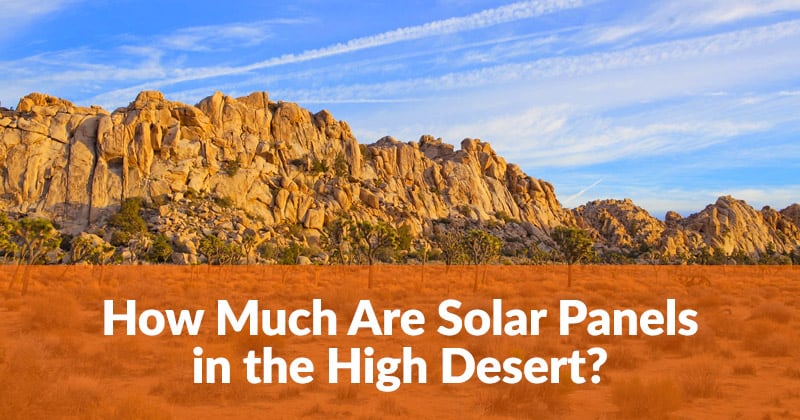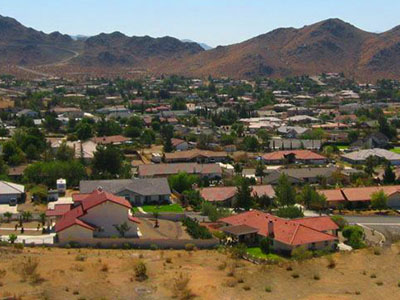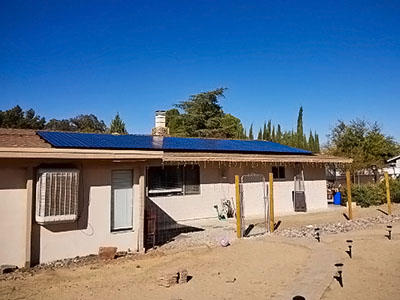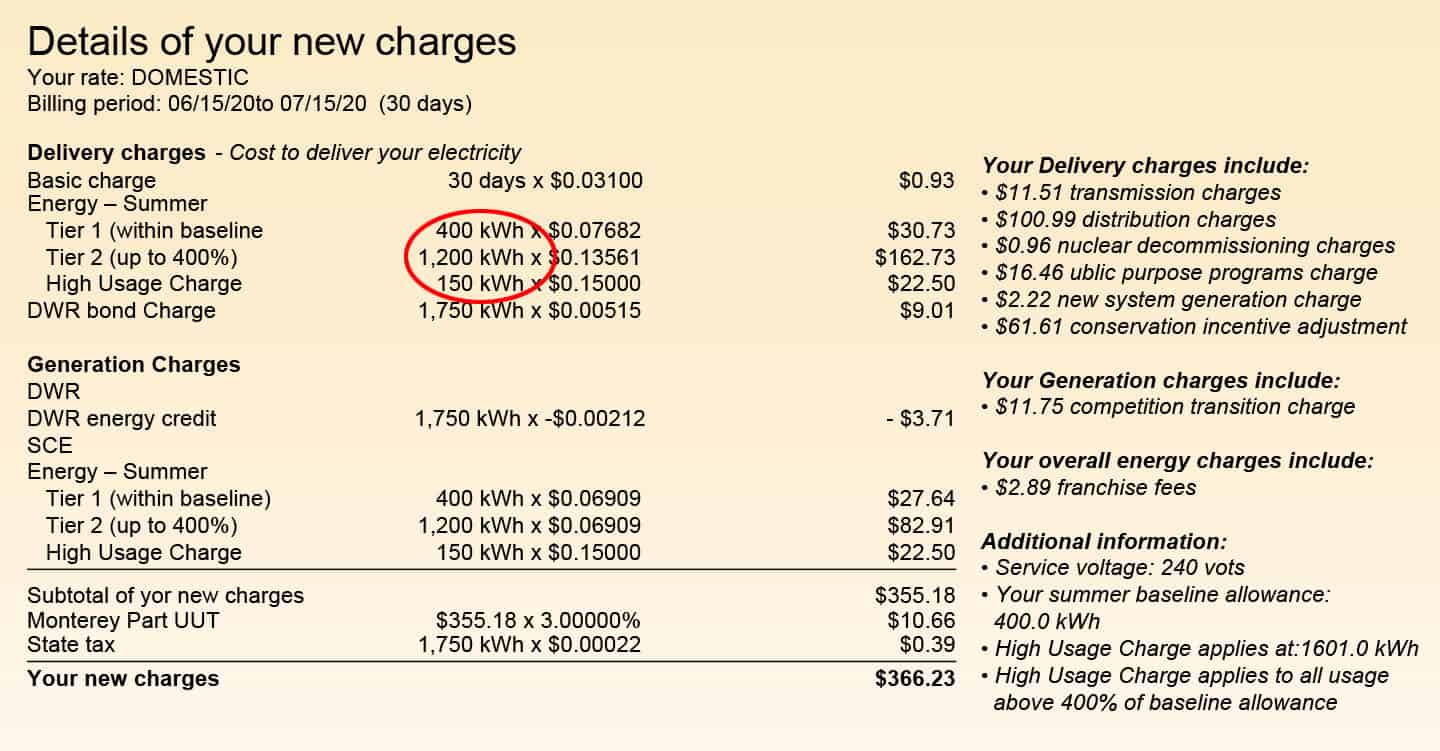How much do solar panels cost in the High Desert in 2020?
Many homeowners had heard that solar energy can reduce your electricity bills, but what is the cost of solar panels in Victorville? All in all the best way to determine the average cost of solar panel installation is to look at the price in dollars per watt ($/W). Generally that is pretty consistent across the country.
As of June 2020, the average cost of new solar panels in the High Desert is around $4.00 per watt, before tax credits. Also, typical solar panel systems are 6,000 watts (6 kW). As a result this makes the average total cost $24,000 after claiming the federal solar tax credit.
The Tax Credit
The current federal solar tax credit is at 26%, which will go down to 22% in 2021. Afterwards the tax credit for residential solar ends. Still that would bring the cost of that 6 kW down to $17,760 in 2020. In other words that means this year is the best time to get solar panels for your home.
Solar Panels in the High Desert:
- The amount of energy a large home uses in California every month is around 700kWh
- To generate 100% of this power with solar panels you’ll need a 6 kW system
- The cost of a 6 kW solar panel system in 2020 is $17,760 after tax credits
- Solar panel costs have fallen over 20% in the past few years
- Bright Solar Power California can also offer up to $1,000 in assistance!
The High Desert is Fertile Ground for Solar
In order to make an “apples to apples” comparison of sunlight different cities can get, we use a measurement called Direct Normal Irradiance (DNI). There are different factors this measurement uses, such as the position of the sun in the sky throughout the year, cloud cover, air pollution, rain, and other weather changes.
Desert Sunlight
In truth, being located in the desert gives many advantages for solar power. For example, Victorville has a DNI of 7.92, which is among the highest in the US. DNI may range from 3.0 to 8.5 around the states. Conversely, some states, like Alaska, can go as low as 0.5 DNI. Considering a higher DNI means more sunlight, that means more electricity generation for your solar panels.
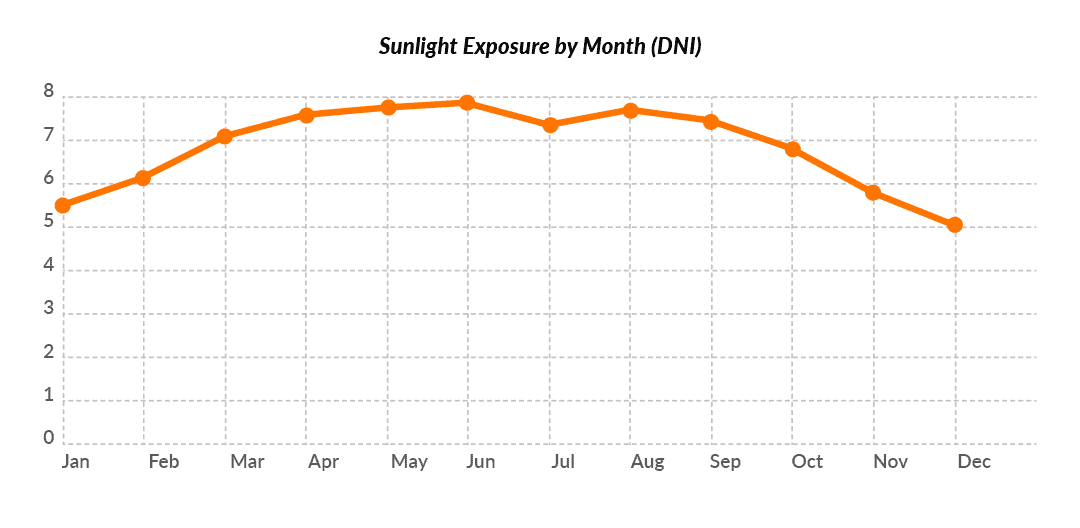
Homes in the High Desert will have very little seasonal variation in sunlight. Solar panels in peak months will produce 140% more than the darkest month in winter. That is a minor difference between winter and summer solar energy production when compared to the rest of the US.
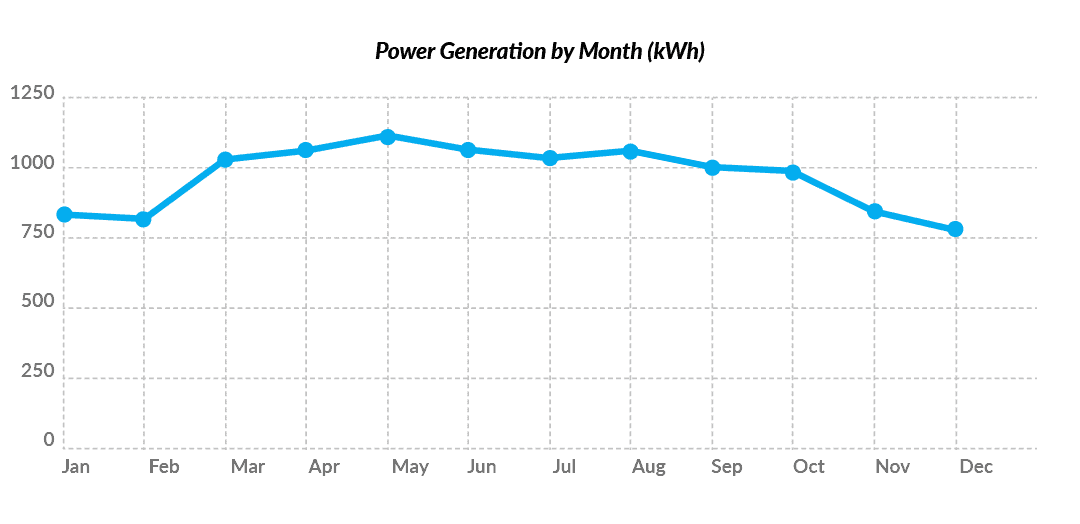
Solar Panels for Your Home
Homeowners interested in solar panels should expect to see a range of quotes when shopping. Costs for a typical solar panel installation in California range from $15,900 to $18,000 after solar tax credits.
Your solar panel system costs depend on the size of the system you need. The size is determined by how much electricity you want to generate for your home in the High Desert. In other words, the size of your home and your electricity usage is what determines the size of your solar panel system.
Solar Panels for Average Homes
According to records from the US Census, the average home size is 2,301 square feet. The US Energy Information Administration tells us that homes in the US typically use 914 kWh on a monthly basis. Some quick math tells us that you’ll need about 0.40 kWh of electricity for each square foot of your home. As such, the solar panel cost in the High Desert is not much different.
With this information, you can get a good idea of what size your solar panel system will need to be based on the size of your home and how much electricity you use on a monthly basis. Alternatively, you can always take a look at your last few energy bills.
Above image shows a typical bill from Southern California Edison, with the kWh used in this month highlighted.
Solar Power Vs. SCE (Southern California Edison)
Based on the typical 6 kW solar panel system we mentioned prior, the average cost for electricity in the High Desert for solar panels is roughly 5¢ per kWh. This is based on the manufacturer warranty for the life of your panels, which is 25 years after installation.
Solar panels can last much longer than that, especially with proper maintenance. With this in mind they may last up to 40 years or more. Additionally, the mounting equipment may last even longer, thus making upgrades cheaper in the long run.
Average costs of utility power over 25 years (if you don’t have solar panels) is around 20¢ per kWh. As a result, you can save 15¢ per kWh, proving that solar panels are significantly cheaper than SCE when providing electricity to your High Desert home. In addition, current SCE electric rates have shown trends to grow each year at a rate of 3.5%. Yikes.
How will the size of your home impact the cost of solar?
Knowing the average need of electricity for each square foot and how much energy your family actually uses is helpful, but what does all of this mean for you? The total cost of installing solar for your home depends on size. Obviously, a bigger system will cost more because you’ll need more equipment and more time to install it.
Here is a breakdown of costs for solar panel systems by size:
| System Size | Average Cost (Before Tax Credit) |
Average Cost (After Tax Credit) |
| 3 kWh | $12,000 | $8,940 |
| 4 kWh | $16,000 | $11,920 |
| 5 kWh | $20,000 | $14,900 |
| 6 kWh | $24,000 | $17,880 |
| 7 kWh | $28,000 | $20,860 |
| 8 kWh | $32,000 | $23,840 |
| 10 kWh | $40,000 | $29,800 |
| 12 kWh | $48,000 | $35,760 |
| 15 kWh | $60,000 | $44,700 |
| 20 kWh | $80,000 | $59,600 |
These prices are based on the average cost of solar panels both before AND after claiming the federal solar tax credit (ITC), which reduces your cost by 26% in 2020. California also provides a number of incentives and many local utility providers also offer rebates. These extras should be considered when shopping for solar panels as they can greatly affect the cost of solar panels for your High Desert home.
All of this information may be a lot for the average homeowner to understand. That is why we would like to help any homeowners that are interested in solar panel systems, especially in the High Desert! With one simple call to our team, we can help you easily understand how solar will affect your home.
With one simple call to our team, we can help you easily understand how solar will affect your home.
(442) 242-7374
Return on Investment
Solar power will pay for itself with the money you save over your current utility bill. Not only do High Desert residents save money on their utility bill, they can also receive credits for the extra electricity they produce. Also the length of time needed for the system to collect enough electricity to save you the money to pay for the entire cost of the system may vary.
Several factors may affect this return on solar investment, such as the amount of electricity your family uses, the size of the system, the finance method used to purchase the panels, and even the orientation of the panels on your roof and how much sunlight acquire.
Lifespan of Solar Panels
On average, High Desert homeowners that are also customers of Southern California Edison (SCE) can expect the solar panel system to pay for itself in 6-10 years. After that, any energy you produce is pure profit.
The lifespan of solar panels can typically go from 35 to 40 years (or more). Additionally, after the system pays for itself, you can get up to 30 years of energy from the sun for free.
Ready to Go Solar?
High Desert residents are among the best in the country when it comes to solar energy. Because we live in the desert, all of us conserve from time to time. With the amount of sunlight this area is blessed with, it seems like a waste if we don’t harness its power for our homes. Don’t you agree?
If you are interested in learning more about solar panels for your High Desert home, contact us today at 442-242-7374 or sign up for a free consultation below.

